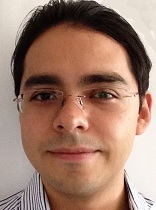Partenaires
Thesis prepared in the laboratory IMEP-LaHC & CEA , supervised by Mireille MOUIS (IMEP-LaHC) - supervisor et Emmanuelle PAULIAC-VAUJOUR (CEA ), Co-supervisor.
Date infos
Defense of a doctoral thesis of LEON PEREZ Edgar, for the University Grenoble Aples, speciality Nano Electronics and Nanotechnologies , entitled:
Location infos
Amphitheater of the CEA (Entry 1)
17 Avenue des Martyrs
38000 Grenoble
